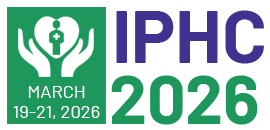Title : Exploring the impact of parental guidance strategies on the risk of online grooming in children and adolescents
Abstract:
The sexual abuse of children and adolescents is an increasingly severe social issue, with emerging internet technologies providing new opportunities for the proliferation of child pornography. Extensive research highlights the serious psychological impacts of online sexual abuse on minors. In this context, parents stand as the first line of defense in protecting children from danger. Despite experts and practitioners emphasizing the importance of parental supervision to protect children from the risks of digital technology-facilitated exploitation, current research on the correlation between parental oversight of children’s internet use and the risk of sexual abuse remains insufficient. This study categorizes parental strategies for guiding children's online activities into four types based on relevant literature: Restrictive Mediation, Active Mediation, Participatory Learning, and Technical Mediation. These categories form the basis of a five-point scale (always = 5, never = 1) to explore how different strategies predict the risk of children encountering online grooming. The questions about grooming risk reference standards provided by organizations such as the Internet Safety Brigade and the National Society for the Prevention of Cruelty to Children include signs such as children becoming secretive or defensive about their online behavior or being unable to explain money or gifts in their possession. This study involved both online and field surveys, with 301 parents of children under 18 years of age as participants. The results indicated that the most common strategy used by parents is Active Mediation, which involves discussing online content with children, explaining its appropriateness or potential risks, and teaching online safety rules (M = 3.801, SD = 0.935). The second most common is Restrictive Mediation, which involves setting rules for technology use (M = 3.608, SD = 1.026). The third is Participatory Learning, in which parents engage with technology alongside their children (M = 3.532, SD = 0.902). The last is Technical Mediation, which uses parental controls to filter inappropriate content (M = 3.032, SD = 1.197). Parent reports indicate a low potential risk of children being groomed (M = 1.517, SD = 0.435). Correlation analysis revealed a significant relationship between overall supervision strategies and grooming risk, F(4,258)= 7.085, p<.001, R2=.099. Specifically, more frequent use of Restrictive Mediation (β = -.201, t = -2.475, p=.014) and Participatory Learning (β = -.179, t = -2.194, p=.001) correlates with lower risk, whereas increased use of Technical Mediation (β = .247, t = 3.104, p=.002) correlates with higher risk. These results suggest that different supervision strategies have varied predictive effects on grooming risk. However, due to the cross-sectional nature of this study, causation cannot be established. When parents notice signs of potential grooming, they might increase the frequency of Technical Mediation. The lack of a predictive effect of Active Mediation could be because it focuses on discussion and education, allowing more autonomy for children, which could lead to more diverse online behavior. Restrictive Mediation and Participatory Learning likely reduce the potential risk of grooming by limiting internet use and increasing parental involvement in children's online activities.



